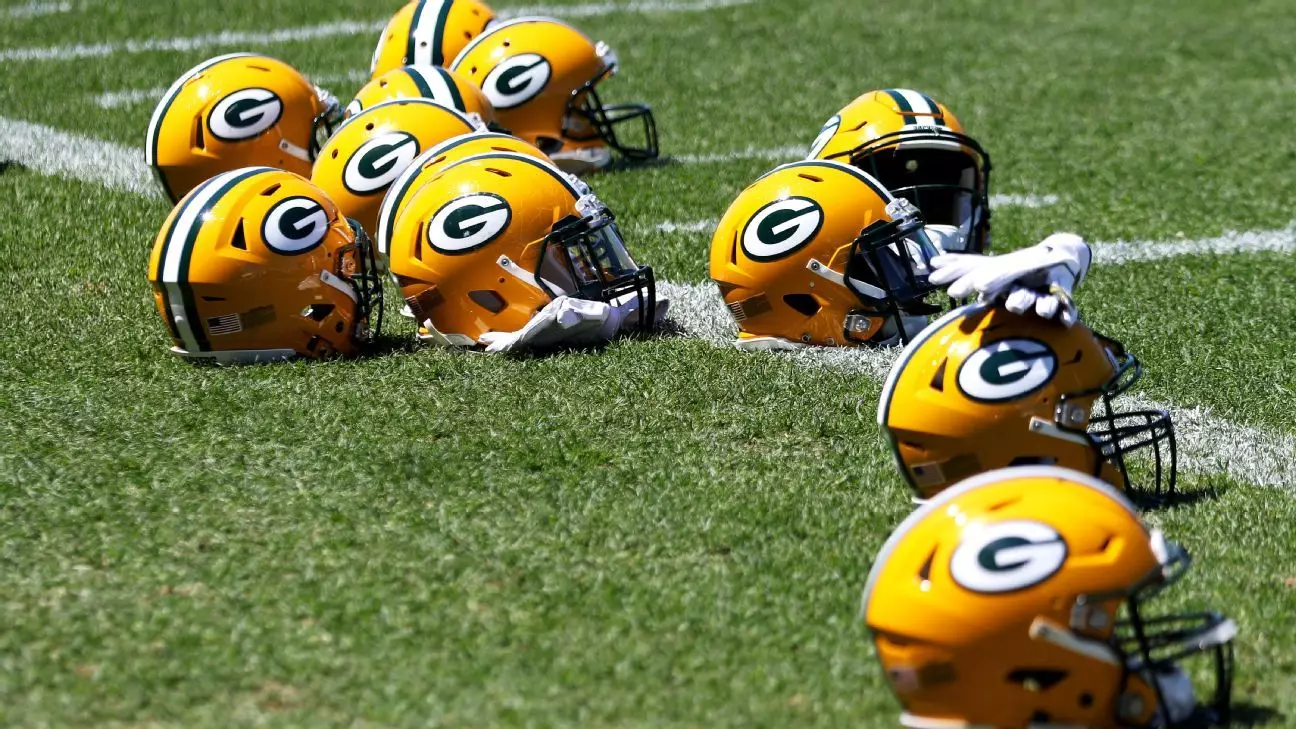Decades ago, the NFL’s financial landscape was modest and relatively inaccessible. When Mark Murphy first became president of the Green Bay Packers, the league’s revenue sharing hovered around $138 million per team. Fast forward to today, and the figures tell a story of explosive growth that defies traditional business paradigms. The recent report revealing the Packers received $432.6 million in national revenue within a single fiscal year illustrates how the league has transformed into an economic juggernaut, amassing over $13 billion for all 32 teams combined.
What makes these numbers particularly compelling is the fact that the Green Bay Packers, as the league’s only publicly owned franchise, offer a transparent window into the NFL’s finances. Unlike private teams driven by individual wealthy owners seeking profit, the Packers operate under a unique structure, obligated to reveal their financials annually. This transparency not only provides insights into the league’s revenue flows but also highlights a sustained trajectory of increasing profitability, driven substantially by innovative broadcast deals and expansion into streaming services.
Revenue Growth: The Power of Media and Digital Transformation
A significant driver behind this upward spiral is the NFL’s mastery of media rights. Murphy emphasized that approximately 60% of the Packers’ revenue is derived from national sources, primarily television broadcasts. With the league’s broadcast rights deals now exceeding $110 billion over several years, it’s evident that the league’s strategy of negotiating lucrative TV packages has paid off remarkably well. The league’s aim for a steady 7% annual growth in broadcast revenues indicates a focused effort to continually capitalize on the media landscape’s evolution.
In an era where digital streaming is reshaping how audiences consume content, the NFL has been quick to adapt. While traditional TV still dominates, the league’s push toward streaming platforms signifies foresight in capturing younger demographics and harnessing new revenue streams. The Packers have keenly benefited from this expanding media ecosystem, reflected in their increased operational profit and local revenue, especially after hosting an additional home game following the league’s schedule expansion.
Financial Stability and Strategic Investments in Infrastructure
Despite the soaring revenues, the Green Bay Packers’ approach to financial management underscores prudence and resilience. With a corporate reserve fund that surpasses half a billion dollars, the team demonstrates a commitment to long-term stability rather than short-term gains. This conservative financial strategy is vital, given the team’s unique ownership structure—more than half a million shareholders who collectively own the franchise without receiving dividends.
In the absence of a wealthy owner able to pour millions into the team indiscriminately, the Packers focus on building infrastructure and maintaining competitive facilities. The recent renovations to Lambeau Field, including a state-of-the-art locker room, exemplify this balanced approach—investing heavily in the team’s core assets without compromising financial health. Over $675 million invested during Murphy’s tenure reflects a dedication to preserving the team’s iconic status and ensuring sustainable growth.
Ownership Model: A Unique Approach in a Commercialized League
The Packers’ ownership structure stands out as a rare model in professional sports—a publicly owned nonprofit entity with over half a million shareholders. This arrangement fosters a community-centric ethos and ensures that profits are reinvested into the team and its facilities rather than distributed as dividends. Limiting individual ownership to 200,000 shares prevents any single entity from exerting undue influence or gaining control, thus safeguarding the team’s legacy and identity.
This model also influences the team’s financial strategies. Without easy access to private capital or venture investments, the Packers remain resilient through disciplined management and disciplined reinvestment. This approach is increasingly attractive in a league increasingly influenced by billionaire owners and private equity firms, as it preserves a community-oriented philosophy that has sustained the franchise for over a century.
Looking Forward: A League Positioned for Continued Dominance
With the incoming leadership of Ed Policy and the foundational stability established under Murphy, the NFL appears poised to sustain its ascendance. The league’s focus on innovative media partnerships, streaming efforts, and strategic infrastructure investments underscore a forward-thinking mindset that will likely keep revenue streams robust for years to come. Moreover, the league’s ability to adapt to digital and technological changes while maintaining traditional broadcasting dominance illustrates a flexibility few industries can match.
The success stories of the NFL and the Green Bay Packers are not solely about numbers—they reflect a transformative vision of sports as both entertainment and an economic force. In a landscape where sports franchises are often relegated to profit-driven entities, the Packers demonstrate that community values, strategic foresight, and prudent financial management can coexist with extraordinary commercial success. This model—rooted in shared ownership, innovation, and resilience—sets a new standard in sports economics, promising an even brighter future ahead.

